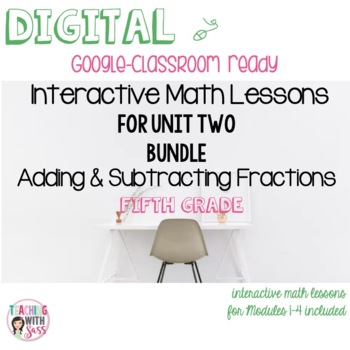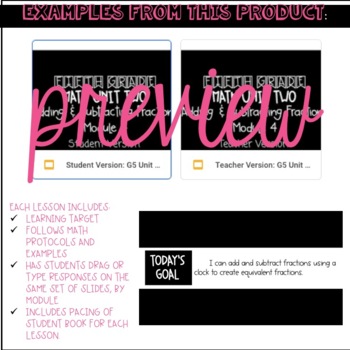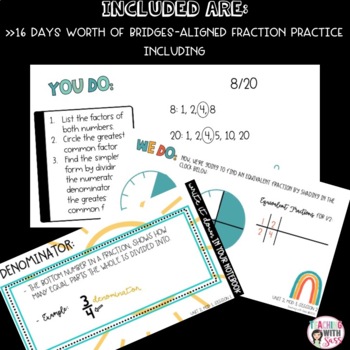BUNDLE- Math Unit Two: All Modules *Aligned to Specific Curriculum
- Google Drive™ folder

What educators are saying
Products in this Bundle (4)
Bonus
Description
Are you looking for some way to continue teaching your Bridges Math Curriculum in an organized, student-friendly, digital way? This product includes:
Module One: One set of Google slides for students where they can see:
-Lessons 1-5 of Unit 2, Module 1 (The Pre-Assessment is not included)
Module Two: Google slides for students where they can see:
Lessons 1, 3, 4, & 6 of Unit 2, Module 2
Module Three: Google slides for students where they can see:
-Lessons 1, 2, 4, & 6 of Unit 2, Module 3 (Post-Assessment Not Included)
Module Four: Google slides for students where they can see:
-Lessons 1-3 of Unit 2, Module 3
A Bonus Product: A Google Doc, editable, suggested pacing guide of Unit 2 that aligns to the math workshop model, includes student learning objectives, and a brief summary of each lesson to make planning easy!
All Four Module Lesson Sets Include:
-A learning objective for each day
-Each part of the Bridges Lesson broken down in student-friendly language. Students will practice their work by dragging shapes and/or typing their responses in the slides.
- A teacher-friendly version of the Google slides for normal direct teaching or to use with Screencastify, Zoom, Google Meets, and more.
- A student-friendly version of the Google slides makes distance-learning and blended learning easy to manage!
Important Notes:
- As a reminder, Lesson 1 of Module 1 is not included- this is the Pre-Assessment.
- As a reminder, Lesson 6 of Module 3 is not included- this is the Post-Assessment.
· I created this product to supplement and be used in conjunction with Unit 2, Grade Five, published by The Math Learning Center. My product is not provided, approved, or endorsed by The Math Learning Center.
· BRIDGES® is a registered and unregistered trademark and service mark of The Math Learning Center in the United States and other countries. The Math Learning Center owns all copyrights in the Bridges® in Mathematics series, content, and materials.
· Want to learn more about the Bridges Curriculum? Check it out here: http://www.mathlearningcenter.org
Some Additional Bridges Unit Two Materials to Explore:
-A Student Notebook Companion Guide to Unit Two with organizers, vocabulary and notes pages.
-A Jeopardy Review for Unit Two.
All of the slides are Google slides. You can add or delete slides as you see fit!





